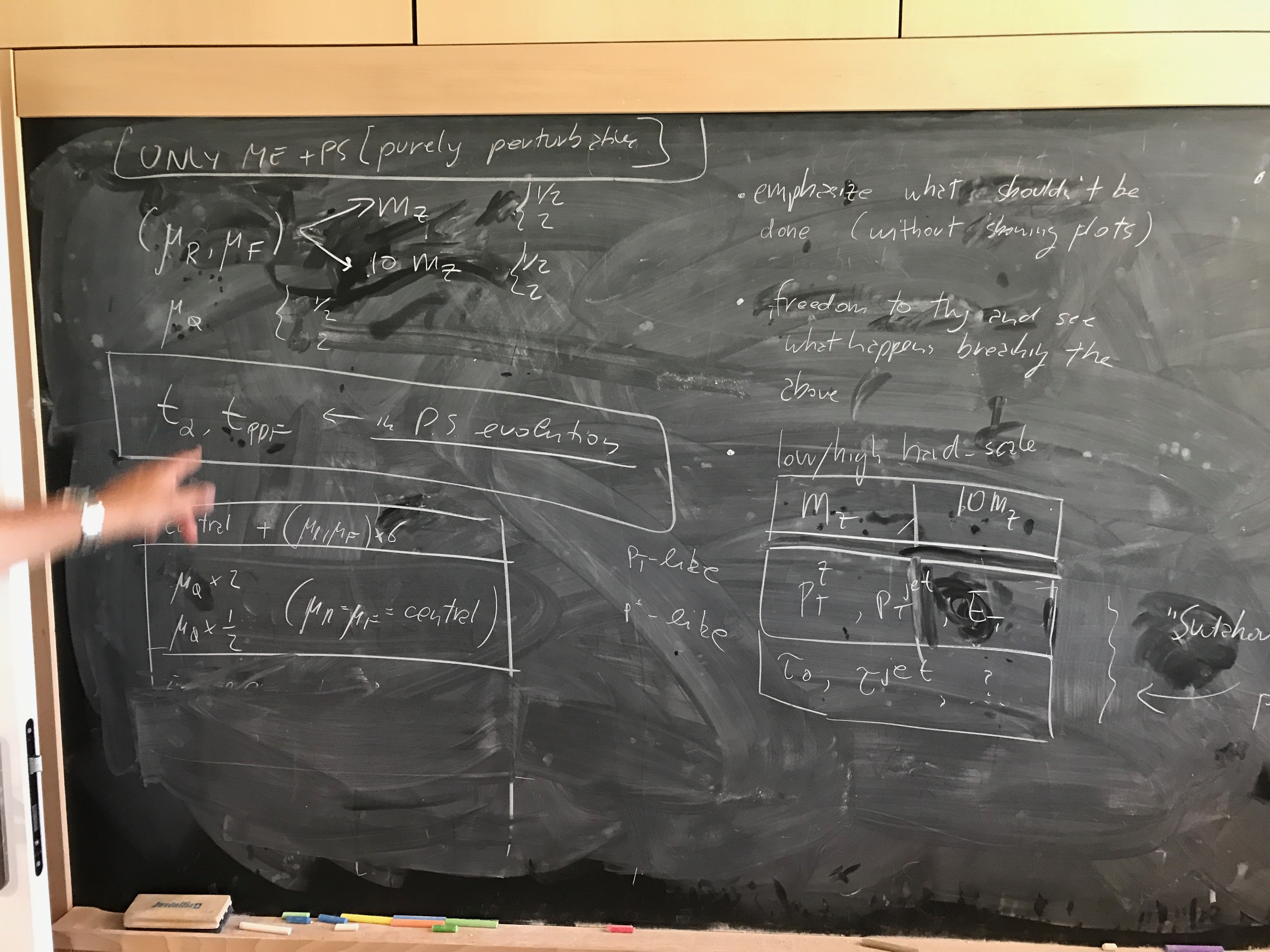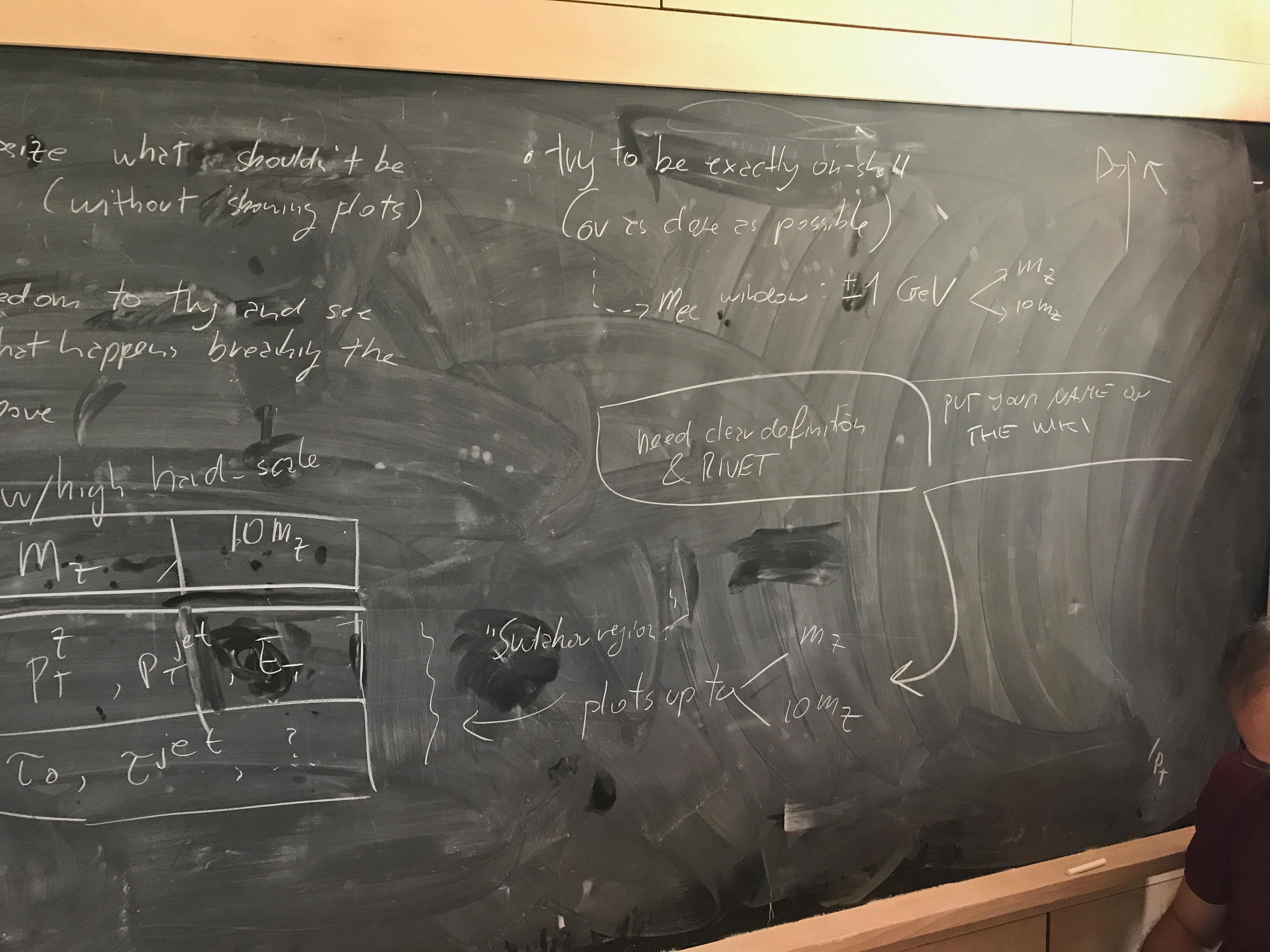Shower Variations sub working group
[MC generators perturbative uncertainties]
interested people: Emanuele, Stefan, Luca, Efe, Vitaliano, Kenneth, Carlo, Adil Jueid, Andrzej, Simon, Philippe G., Josh MC, Simone, Marek, Peter, Chris G, Johannes B. …ADD YOUR NAME HERE…
This page is intended to collect information on shower uncertainty discussions. Here are the kick-off talks:
| Parton shower: uncertainties introduction |
| Parton shower uncertainties in matching/merging in Sherpa |
| Parton shower variations in Herwig |
main scales in the game:
(1) muR, muF (in MEs)
(2) muQ (shower starting scale)
(3) t_alpha, t_pdf (ren end fact scales in parton shower)
first round of discussions:
- in general it seems we are not yet in the position of systematically assessing the logarithmic accuracy of a (N)LO+PS prediction (beyond LL), although for some observables this might be possible.
- for this reason, as a first controlled step, let's focus on (a) and (b) only. Uncorrelated variations of these scales wrt the central values are a-priori allowed, as long as
a) we don't destroy for instance the NLO accuracy of the final result, if we are matching at NLO (or using NLO merging).
b) we don't introduce large logs, by setting for instance muF and muQ very far apart.
- as a start, compare different generators, but only perturbatively, using the above criterium (many event generators are directly represented, so we'll be sure that each group will implement the above constraints properly).
- outcomes of such exercise:
a) check that under these commonly agreed assumptions, all results (i.e. central lines and total envelope) look as expected, and each one is consistent with the others (ER: band overlapping seem a reasonable way of quantifying that, do we agree?). Even if we find some inconsistencies here, we'll have learned something.
b) If we use color-singlet production, we have an higher-order logarithimc resummation to compare against.
c) It was suggested to consider Drell-Yan, both with the true mz value as well as with an inflated value, to be in the position of disentangling better effects due to the running of alphas wrt log (hard scale/pt). If the color-singlet mass is, say, 500 GeV, then the log is parametrically large for relatively large values of pt. An alternative could be WW production (ER: although if we use Drell-Yan, more people will be able to contribute).
d) if all goes as expected, we'll be able to write in the proceedings a guideline for experimentalists with details of what type of variations within the groups (1) and (2) should *not* be done. It's a small step, but it's a step forward.
e) in order to substantiate the above conclusions, it'd be good to apply the same reasoning to a process that we understand less well, and see what happens there. Ideas?
Next steps:
1) people interested, please sign
2) meet and decide process(es) to run, settings (pdf, couplings, etc), and observables
3) suggestions/criticisms/improvements: please don't hesitate !
further thoughts
Concerning (3): some of us are interested in understanding better, for instance, what happens if t_alpha is varied. Not yet clear if this discussion will bring to results that can be included in the proceedings, but at least we are having a common discussion!
Obviously any other attempt to understand what happens when playing also with the other settings is welcome, and if any of you find something interesting, the LH proceedings are probably a good place to report your findings.

